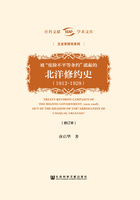
Abstract
From 1842 to 1943, China suffered infringement of its sovereignty as a result of a series of “Unequal Treaties.” After it agreed to become part of the international legal order, the Chinese government adopted the principle of sovereign equality in an effort to rid itself of the burden imposed by those treaties. There were two basic approaches: abrogation and revision. In the 1920s Dr. Sun Yat-sen famously called for “abrogation of the unequal treaties”, a catchphrase that both the Kuomintang (KMT) and the Chinese Communist Party (CCP) used to win support from the public and boost their own political power. However, abrogation was not nearly as effective as revising existing treaties for purposes of protecting and restoring national sovereignty, especially from the viewpoint of international law.
In late Qing, eighteen countries signed treaties with China that offered them a range of privileges and that were detrimental to Chinese sovereignty. Soon after the founding of the Republic of China in 1912, the government in Beijing passed a resolution requiring any new treaty to grant equal rights and privileges to each signatory.
After World War I, the Chinese government asked to have treaty revision included in the agendas of both the Paris Peace Conference of 1919 and the Washington Conference of 1921. The request was met only with empty gestures of sympathy, and no concrete resolution was passed. In the meantime, the Soviet Union made two offers to the Chinese government to relinquish unconditionally privileges that had been granted them in treaties signed by Tsarist Russia. Dr. Sun Yat-sen and many Chinese accepted the Soviet offers, and the two countries formed an alliance that opposed imperialism and championed the abrogation of unequal treaties.
After the May 30th Incident in 1925, public opinion in China turned against the treaty system. In a memorandum sent to the governments of countries that had signed unequal treaties with China, the Chinese government in Beijing claimed that since all these international treaties had been negotiated decades earlier, when conditions both inside and outside China were very different, they ought now to be revised to stay valid and continue to be applicable. In their joint response, eight imperial powers said that they would consider the request but that the revisions would depend on the Chinese government’s willingness and ability to abide by them.
When it became clear that pleas for wholesale treaty revision were not going to be taken seriously, the Beijing government, under mounting pressure to abolish the unequal treaties, resorted to a different approach. It would, citing the principle that changes in circumstances warrant changes in the terms of the treaties, renegotiate with each individual country of concern over revisions when an existing treaty with it expires. This would become the dominant strategy for achieving treaty revision.
In 1926, three treaties, with France, Japan and Belgium, respectively, were due to expire. The Chinese government notified each concerned government of its intent to see terms of the renewed treaties revised. France and Japan agreed but dragged their feet on negotiations citing a myriad of excuses. Belgium rejected China’s proposal outright, claiming that China had no right to renounce a bilateral treaty unilaterally. The Chinese government in Beijing announced its decision to renounce the Treaty between China and Belgium on November 6. Yet not long after that, Belgium, finding itself increasingly isolated in its unwillingness to budge, compromised and agreed to renegotiation and withdrawing the lawsuit it had filed at The Hague.
This case greatly boosted China’s confidence in its ability to tackle the issue of outdated treaties. Between 1926 and 1928, the Chinese government in Beijing made great strides on this front. It renounced two treaties, and forced several countries to negotiate new treaties with China, a testament to the effectiveness of the approach they had adopted, an approach that the Nationalist government made maximum use of without openly admitting to doing so.